You need to refrigerate leftover bread pudding.
The cake contains lots of milk and eggs, which make the dessert super moist. And as you probably know, moisture, sugar, and room temperature make nearly ideal conditions for microbial growth.
That means yes, bread pudding requires refrigeration. Unless, of course, you want to grow some fuzzy white threads of mold on the surface.
Most recipe developers and blog authors (like Live Well Bake Often and Simply Recipes) out there also agree that refrigeration is the way to go for any leftovers that you have.
Interested in learning more about storage, shelf life, and reheating bread pudding?
Read on.
Bread pudding is a great way to use stale bread or stale pita bread.
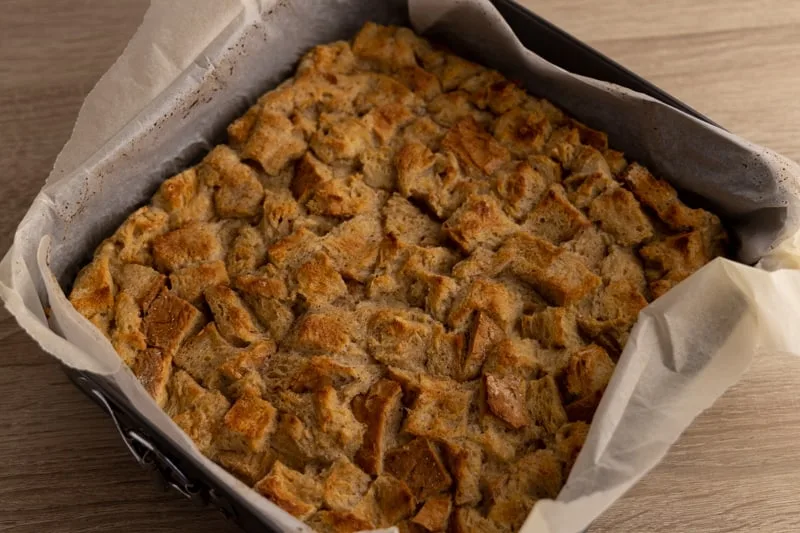
Table of Contents
- How To Store Bread Pudding
- How Long Does Bread Pudding Last?
- How to Tell if Bread Pudding Is Bad?
- How To Reheat Bread Pudding
How To Store Bread Pudding
Once your bread pudding has fully cooled, you should seal it tightly and refrigerate it. An airtight container or a freezer bag is great for the job, but a cake carrier might be the only option if you need to store a whole cake.
Of course, you can always wrap the leftovers in plastic wrap instead.
The wrap prevents the dessert from drying out better than a container or bag does, but it also uses a bunch of plastic in the process.
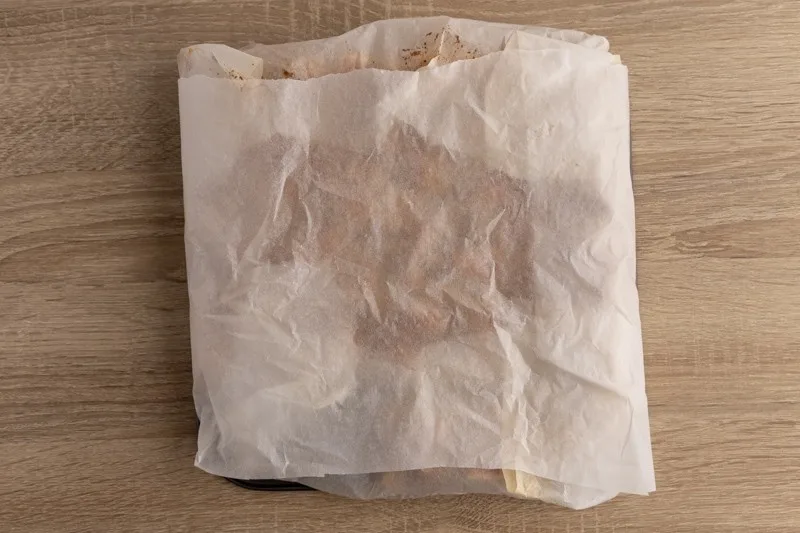
I prefer containers because they’re the easiest to work with but feel free to go with whatever you find best. And speaking of containers, the more compact the container, the better, because less free space means drying out slows down.
If you’ve baked your own bread pudding, let it rest on the counter until it has thoroughly cooked. Otherwise, there will be condensation in the container or bag and lots of water drops as a result.
All of these practices work for cheesecake, too.
If your bread pudding turned out super moist (like mine), I suggest putting it on a couple of paper towels before refrigerating. This helps remove any excess moisture so that you don’t end up with a soggy bottom. You can also add some towels to the container or bag itself.
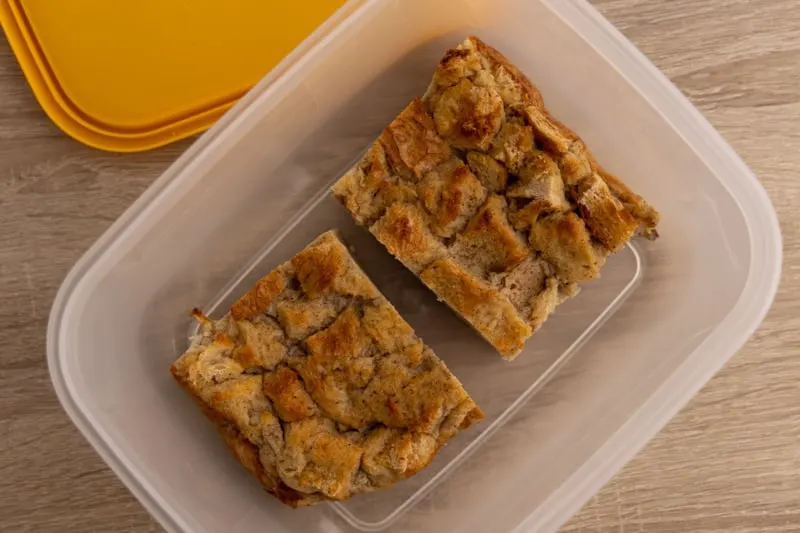
Sauces and Toppings
Many people top bread pudding with some sort of sauce or topping. Some prefer ice cream, while others go with custard or something as simple as whipped cream.
Should you store your bread pudding already topped, or not?
That depends on what you use as a topping. Here’s the lowdown:
- Ice cream. Add it right before serving; that’s quite obvious.
- Whipped cream. Unless it’s stabilized, whipped cream keeps shape only for a day or so. It’s probably best to add it fresh.
- Custard and other fridge-friendly sauces. These store well, and you can refrigerate bread pudding topped with these with no problem.
Now, even if your sauce or topping keeps well in the fridge, there’s one more issue. Many of these make the top wet or soggy. So if you like your top crispy, that’s no good.
Long story short, unless your sauce stores well and you don’t mind a slightly soggy top, it’s better to add the topping when reheating the cake or right before serving it.
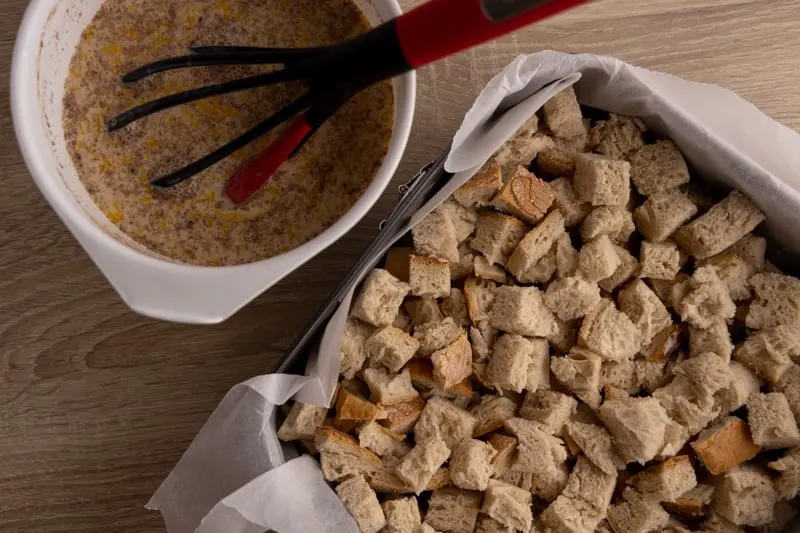
How Long Does Bread Pudding Last?
Leftover bread pudding lasts for about 4 days in the fridge, but the sooner you eat it, the better the texture.
The 4-day period is the standard recommendation for storing leftover perishable foods. However, if you check the recipes online, some recommend up to 5 days of storage, so extending that period by a day is an option.
If you need more time than that, you can always freeze the leftovers. I wrote a whole article on freezing bread pudding on our sister site CanYouFreezeThis.com, in case you’re interested.
How Long Can Bread Pudding Sit Out?
You can leave bread pudding out at room temperature for up to two hours before it becomes unsafe to eat. And if it sits at a temperature over 90°F (or 32°C), that period shrinks to only an hour.
That’s the 2-hour rule for storing perishable food, and it applies to bread pudding because it’s a super moist dessert that requires refrigeration.
(It also applies to leftover pizza, in case you were wondering.)
Consequently, you should always try to cool freshly baked bread pudding as quickly as possible so that you can refrigerate it within two hours of taking it out of the oven.
Of course, it’s up to you if you follow this rule to a tee or not.
For me, I’m trying to be reasonable. So if I happen to leave bread pudding on the counter for three hours before I refrigerate it, I assume it’s okay. But if I accidentally leave it out overnight, I toss it because it’s no longer safe.
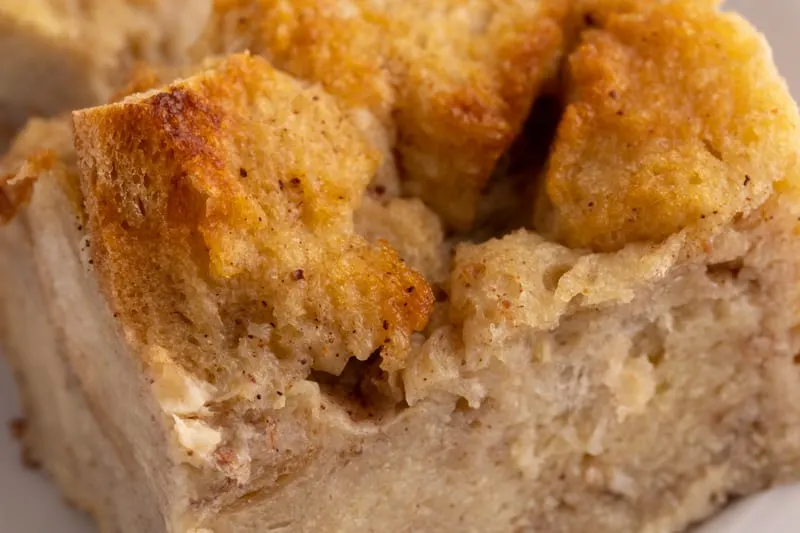
How to Tell if Bread Pudding Is Bad?
Discard bread pudding if:
- It’s moldy. If you notice any signs of white fuzzy mold growing on the surface, the dessert is gone. Cutting out the spoiled part and eating the rest isn’t a good idea for such a moist baked good.
- It smells sour or off in any other way. If it smells funny, assume that it’s spoiled.
- You store it for more than 5 days. Your bread pudding might seem perfectly fine after that period, but it’s no longer safe to eat. The first signs of spoilage often aren’t visible, so it’s better to err on the side of caution.
As usual, if you’re not entirely sure that the dessert is still okay to eat, toss it. Better safe than sorry.
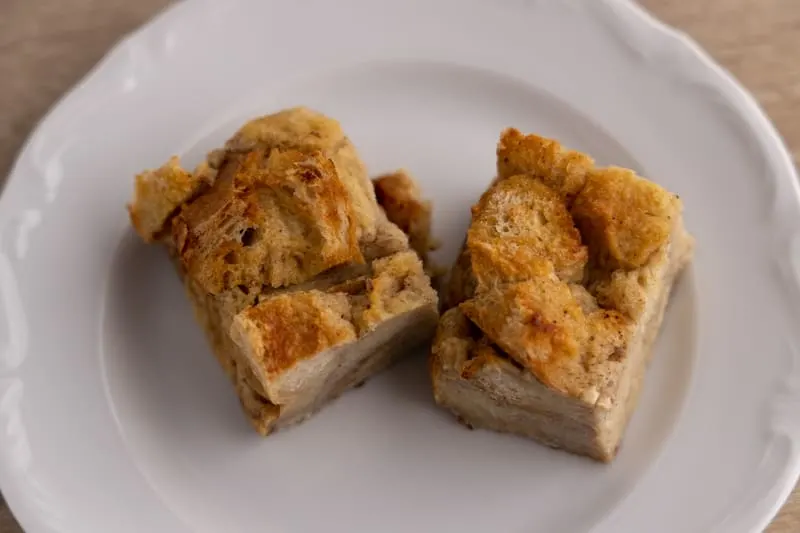
How To Reheat Bread Pudding
Many people prefer their bread pudding to be warm. If you’re one of them and have some leftovers in the fridge, you need a way to reheat them.
Below, I talk about how you reheat bread pudding in the oven and in the microwave. The oven works great for reheating the whole cake or a large part of it, while the microwave is excellent for reheating single pieces.
Oven
Here’s how you reheat bread pudding in the oven:
- Preheat the oven to 300-350°F (150-180°C). If you’re in a hurry, go with the higher temp.
- Cover the pudding tightly with aluminum foil. The foil prevents the cake from drying out, so skipping it isn’t a good idea. Unless, of course, you don’t mind a slightly dry bread pudding. Also, set up the foil so that it’s easy to open it up to check if the dessert is warm enough.
- Chuck the covered bread pudding in the oven and reheat. Depending on portion size, the dessert needs 12 to 15 minutes (if you go with the higher temperature) up to 20 minutes if you go with the lower temperature.
If you want a crispy top, you can remove the foil for the last 2 to 3 minutes of reheating.
Reheating in the oven is great if you’re working with a large piece of bread pudding, but the whole process takes more than 20 minutes (including preheating).
If you don’t have that kind of time but want to enjoy warm bread pudding, the microwave is your best bet.
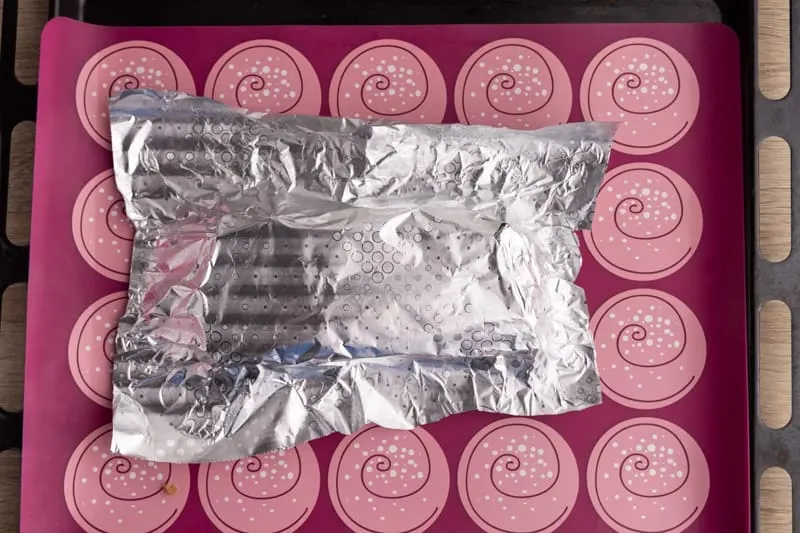
Microwave
Here’s how you reheat bread pudding in the microwave:
- Place the bread pudding on a microwave-safe plate.
- Microwave the dessert in short 20 to 30-second increments until everything is nice and warm.
Now, if you notice that your slices are becoming really dry really fast, try switching from full power to 50% power (or add a glass of water in the microwave, if that’s not an option), and double the length of nuking periods.
A low power setting should prevent the outer layers of the bread pudding from drying out as quickly.
Alternatively, you can microwave the pudding in an inverted bowl or any other microwave-safe equipment that will cover the dessert and keep the steam in. It’s the same idea as wrapping the cake in aluminum foil when you’re reheating it in the oven.